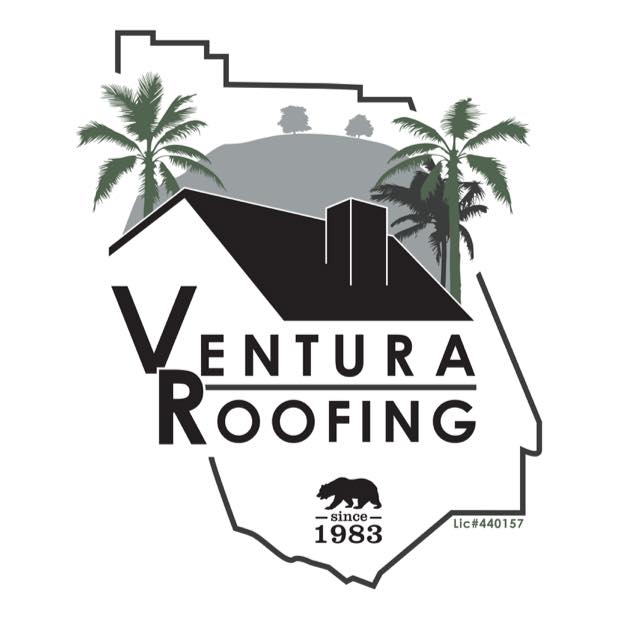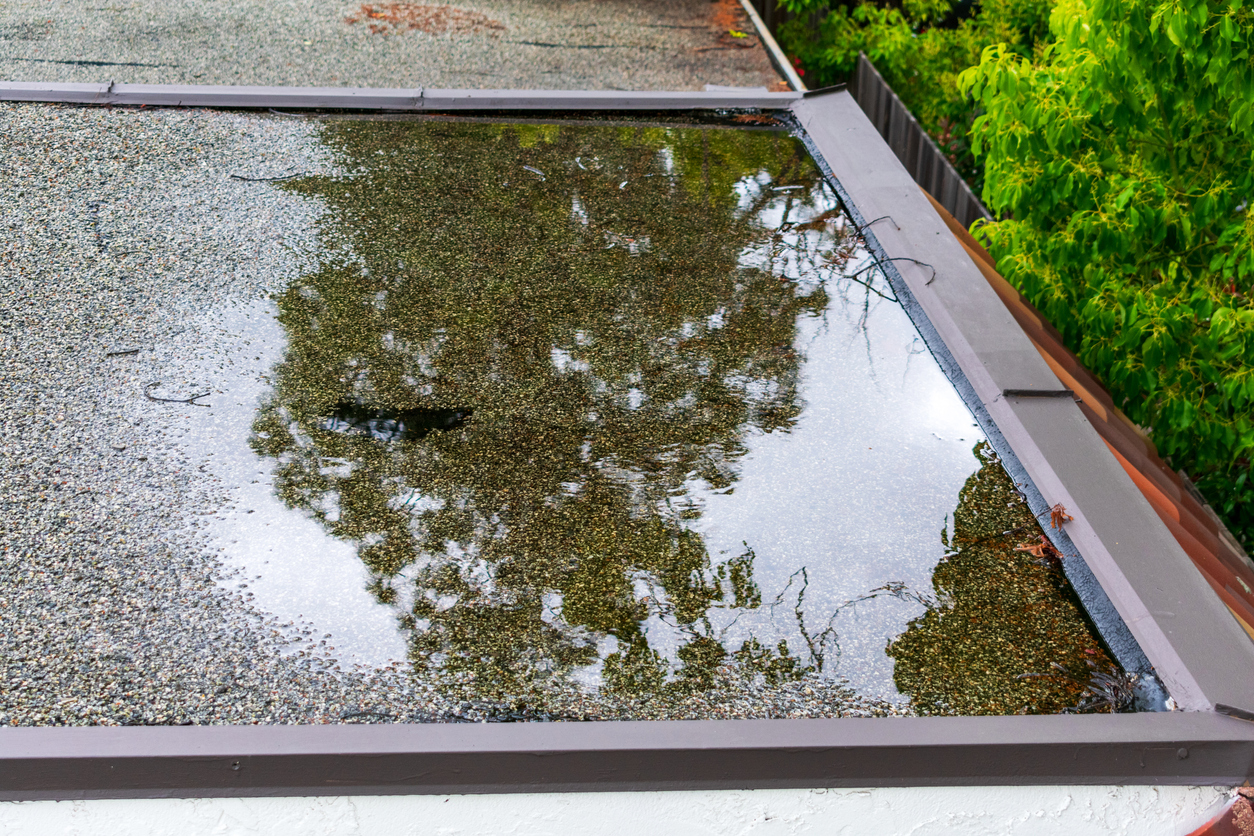Effective flat roof drainage options are critical for the longevity and performance of your building’s roof. Proper drainage avoids water accumulation, leaks, and structural damage. From internal drains to scuppers and gutters, several drainage solutions can meet your roof’s specific needs.
Flat roofs are often admired for their modern aesthetic and efficient use of space. However, unlike pitched roofs, they don’t naturally direct water off the surface, posing a significant problem: water pooling. Stagnant water can lead to severe issues like leaks and structural damage. To avoid these problems, it’s crucial to consider various flat roof drainage options that suit your building’s needs.
In this article, we’re exploring the importance of ensuring your flat roof drainage is set up properly as well as the five top flat roof drainage options.
What is a Flat Roof?
A flat roof, contrary to its name, isn’t entirely flat but has a minimal slope, usually not exceeding 10 degrees. While pitched roofs are more common in residential homes, flat roofs find their mainstay in commercial, industrial, and modern residential architecture. These types of roofs offer a unique aesthetic and functional advantages such as additional space for rooftop gardens, HVAC systems, or solar panel installations. However, the lack of a significant incline means water doesn’t naturally flow off the roof, which brings us to the necessity of specialized drainage systems.
Why Drainage is Important for Flat Roofs
Drainage is a pivotal concern when it comes to flat roofs. The natural enemy of any roof, but especially flat ones, is water. Without a well-designed drainage system, water can pool on the surface. This standing water increases the roof’s load, puts pressure on the structure, and leads to material deterioration. Additionally, water pooling often results in leaks that can damage the interior of the building. Over time, stagnant water can also become a breeding ground for mold, algae, and bacteria, which could potentially lead to health hazards for the building’s occupants. All of these issues not only compromise the structural integrity of the building but can also lead to costly repairs and higher maintenance costs.
Flat Roof Drainage Options
Flat roofs demand custom drainage solutions tailored to meet specific structural and environmental conditions. Typically, architects and engineers perform thorough assessments to determine the most suitable drainage system for your building. They might consider factors such as roof size, local climate, budget constraints, and other unique features of the building. Some popular drainage systems include simple options like directing water towards gutters, more complex solutions involving internal drains, and even advanced technologies like siphonic drainage systems. Therefore, it’s important to consult with professionals for an assessment and recommendation.
Here are the top five flat roof drainage options:
Internal Drains
Internal drains are a highly effective drainage solution for larger commercial buildings where water tends to accumulate at specific points. These drains are often situated in the middle of the roof and include a grate over an opening that prevents debris from entering. The water goes through this grate and is moved away from the roof via a network of pipes that run through the building. While this option is efficient for handling large volumes of water, it is often expensive both to install and maintain. Additionally, they may require more frequent cleaning to prevent clogs.
Gutters
Gutters are perhaps the most straightforward and commonly employed drainage option. These run along the edges of the flat roof and are designed to catch and channel water down and away from the structure. While gutters are usually less expensive to install and maintain, they do have downsides. For one, they can easily get clogged by leaves, debris, and other materials, requiring frequent cleaning. Moreover, if not properly installed, gutters can leak, defeating the purpose of a drainage system.
Scuppers
Scuppers are openings or channels that are placed on the sides of a flat roof to allow for water runoff. Often, they are employed in combination with a slight slope in the roofing to guide the water toward these openings. Scuppers are usually a more cost-effective option compared to internal drains and are easier to maintain. However, they are not always suitable for roofs that have to handle a large volume of water or roofs that are very flat without any slope.
Siphonic Drain Systems
Siphonic Drain Systems are an advanced solution that uses the principles of fluid dynamics to remove water rapidly from the roof. The drains and pipes in these systems are specially designed to create a siphonic action that sucks water away. These systems can be highly efficient and effective but are generally more expensive to install and may require specialized maintenance.
Tapered Insulation
Tapered insulation is essentially a method that involves layering rigid insulation material in a sloping manner beneath the roofing material. This creates artificial slopes that guide water toward drainage points. It can be used independently but is often used in combination with other drainage systems like internal drains or scuppers. While this method adds an extra layer of insulation to your roofing, which is an added benefit, it also increases the cost of the roofing project.
By understanding these various flat roof drainage options, building owners can make informed decisions to preserve the longevity and functionality of their roofs. Each system has its unique advantages and drawbacks, making it essential to consult professionals for a system that’s tailored to your specific needs and environment.
Need Help?
Are you overwhelmed by the choices and complexities involved in selecting the right drainage option for your flat roof?
Our company specializes in customized roofing solutions, including a range of effective drainage systems. With years of expertise and a commitment to quality, we guide you through the entire process, ensuring you get a drainage system that’s both efficient and durable.
Contact us today for a consultation tailored to your specific needs.
Conclusion
Selecting the appropriate drainage system is crucial for maintaining the integrity of a flat roof. Various options like internal drains, gutters, scuppers, siphonic drain systems, and tapered insulation offer unique benefits and drawbacks. It’s essential to consult with roofing experts to analyze your building’s specific requirements and to install a system that will offer long-lasting, effective drainage. Don’t let water pooling become a costly problem; take action today and ensure your flat roof stays dry and damage-free for years to come.

